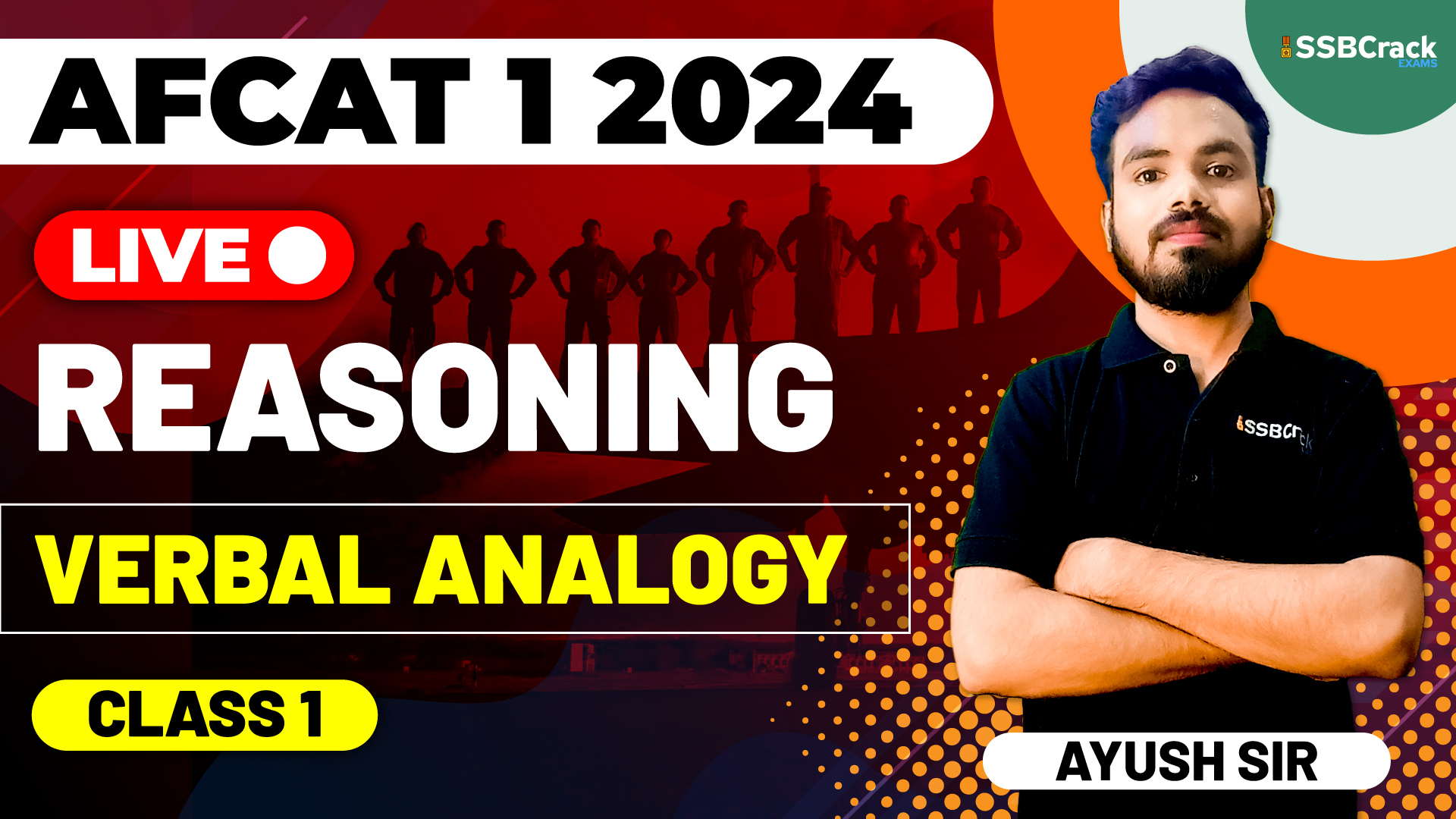The AFCAT (Air Force Common Admission Test) and CDS (Combined Defence Services) exams are highly competitive and sought-after tests for those aspiring to join the Indian Air Force and other branches of the Indian Armed Forces. One of the critical sections of these exams is Reasoning, and within that, Verbal Analogy plays a significant role. In this article, we will delve into the key concepts of verbal analogy, its types, and provide examples to help you prepare for AFCAT-CDS 1 2024 Exam.
Understanding Analogy
Analogy is a cognitive process that involves finding similarities and relationships between different sets of words or objects. In the context of the AFCAT and CDS exams, verbal analogy requires candidates to identify the relationship between two sets of words and then apply the same relationship to another set of words. Let’s explore the various types of verbal analogies you might encounter in these exams.
Types of Verbal Analogies
1. Word Analogy
Word analogy involves finding relationships between pairs of words and applying the same relationship to a new pair of words. There are several types of word analogies, such as synonyms, antonyms, cause-effect, part-whole, and more. Let’s take an example of a synonym-based word analogy:
- Example: Fast is to Quick as Slow is to _____.
In this analogy, the relationship between “Fast” and “Quick” is that they are synonyms. So, the answer to the analogy is “Slow,” as it is a synonym for “Quick.”
2. Number Analogy
Number analogy is about identifying the relationship between pairs of numbers and applying the same relationship to a new set of numbers. Here’s an example of a number analogy:
- Example: 2 is to 4 as 3 is to _____.
In this analogy, the relationship is that the second number is twice the value of the first number. So, the answer is 6, as it is twice 3.
3. Alphabet Analogy
Alphabet analogy focuses on the relationship between pairs of letters and then applying the same relationship to new pairs of letters. Let’s consider an alphabet analogy example:
- Example: A is to B as C is to _____.
In this analogy, the relationship is that each letter is succeeding the previous one in the alphabetical order. So, the answer is D, as it comes after C in the alphabet.
4. Mixed Analogy
Mixed analogy combines different types of relationships within the same analogy. It might involve a combination of word, number, and alphabet analogies. Here’s an example:
- Example: Pen is to Ink as Keyboard is to _____.
In this mixed analogy, the relationship between “Pen” and “Ink” is that the former is a tool used with the latter. So, the answer is “Computer,” as it is a tool used with a keyboard.
Preparing for Verbal Analogy in AFCAT-CDS 1 2024 Exam
To excel in the Verbal Analogy section of the AFCAT and CDS exams, it’s essential to practice regularly. Here are some tips to help you prepare effectively:
1. Learn the Types
Familiarize yourself with the various types of verbal analogies, as discussed earlier: word, number, alphabet, and mixed analogies. Understand the relationships between elements in each type.
2. Practice, Practice, Practice
Solving analogy questions regularly will improve your ability to spot relationships and patterns quickly. Utilize practice papers and previous years’ question papers to enhance your skills.
3. Build Vocabulary
For word analogies, a strong vocabulary is crucial. Read books, newspapers, and magazines to expand your word knowledge. The more words you know, the better you’ll perform in synonym and antonym analogies.
4. Logical Reasoning
Develop your logical reasoning skills to identify the underlying relationships in number and mixed analogies. Logical reasoning practice will help you understand cause-effect and other complex relationships.
5. Time Management
In the AFCAT and CDS exams, time is of the essence. Set a time limit for each analogy question during practice to improve your speed and accuracy.
6. Review and Learn
After solving practice questions, review your answers and identify where you went wrong. Learning from your mistakes is crucial for improvement.
Conclusion
Verbal analogy is a significant component of the Reasoning section in the AFCAT and CDS exams. To perform well, you must grasp the different types of analogies and practice extensively. Understanding word, number, alphabet, and mixed analogies, along with building a strong vocabulary and logical reasoning skills, will significantly boost your chances of success. Keep practicing and stay focused, and you’ll be well-prepared for the AFCAT-CDS 1 2024 Exam. Good luck!



















